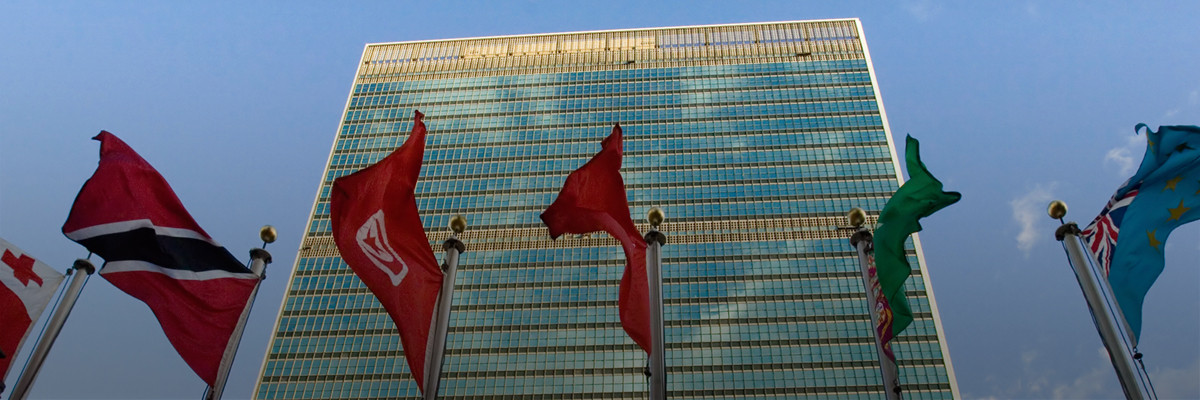
Authors
-
Samantha Harris
Former Associate Director, BSR
Right now, negotiators are hard at work in Bonn, Germany, developing a global climate agreement to begin in 2020. But what do we do until 2020? “Workstream 2,” which operates parallel to the development of the long-term climate agreement, prioritizes pre-2020 action. And a big opportunity for business action via Workstream 2 is investment in renewable energy.
Workstream 2 contains three core elements:
- It addresses climate urgency and ambition in the pre-2020 time period, while also providing a solutions platform before the climate agreement comes into force.
- It supports a full spectrum of sustainability priorities outside of climate. For example, renewable energy also addresses issues like access to energy and poverty.
- The “Technical Examination Process,” organized in six thematic areas, provides a space for governments and other stakeholders to discuss approaches, incentives, and challenges for low-carbon development across key sectors, including renewable energy, energy efficiency, cities, land use/agriculture, and short-lived climate pollutants.
Workstream 2 is the most significant UN initiative for accelerating climate action. This is important for business, as early action supports risk management; drives innovation in technology, operations, products, and services; is cost-efficient; and reflects positively on reputation. Workstream 2 enables private-sector engagement because it provides a collaborative space for business to demonstrate leadership, create partnerships, and influence policy.
On Wednesday, at the latest Workstream 2 “Technical Expert Meeting” in Bonn, We Mean Business presented a signature initiative on renewable energy.
Spearheaded by The Climate Group, the RE100 initiative showcases the leadership of companies making bold, public commitments to 100 percent renewable power and demonstrates the business case for increasing consumption of renewable power. The initiative, which aims to sign on 100 companies by the end of 2015, currently has more than 20 companies and is expected to substantially increase the uptake of renewable power. Estimates indicate that reaching the target number of companies by the end of the year would represent an additional 200,000 gigawatt hours of renewable power, which is equivalent to Australia’s cumulative electricity consumption in 2014.
Examples of RE100 members operationalizing their 100 percent renewable power commitments include:
- IKEA Group has invested €1.5 billion in wind and solar since 2009.
- Commerzbank has sourced 100 percent renewable energy for its buildings since 2013.
- BT has a contract with an energy company to supply 100 percent of its electricity from renewable sources in the UK, which accounts for 80 percent of the company’s power footprint.
- Mars has built a 200-megawatt wind farm in Texas, which is expected to go live this year. The wind farm will provide 800,000 megawatt hours annually, which is enough electricity to supply all of the U.S. energy requirements—representing 12 percent of global energy demand.
- Infosys is planning a 50-megawatt solar park to power offices in Bangalore, Mysore, and Mangalore in India.
In the context of these developments, there are several opportunities for companies and governments to collaborate and scale up renewable energy. For example, if more national and sub-national governments support mechanisms such as power purchase agreements, more companies could purchase renewable energy directly from the grid. And if countries can expand the menu of renewable energy options at the domestic level, companies will be able to invest in new renewable energy options and expand their portfolios.
Policymakers at all levels need to send the signal to the private sector that they are willing to support a low-carbon economy. The expected Paris agreement will send a powerful signal to the market that a transition to a low-carbon economy is under way. Strengthening Workstream 2 could also send a vital stimulus to the market. There are several ways to improve this stream:
- The Technical Examination Process is the key entry point for business and should be continued through 2020. Meetings should be planned with an effort to move beyond information-sharing to formalize collaboration opportunities and tangible partnership among multiple stakeholders.
- In order to help the private sector build adaptive capacity and resilience, the UNFCCC secretariat should launch a parallel technical process that addresses adaptation and resilience.
- A clear link and feedback process should be established between the technical process that addresses challenges and barriers to sectoral ambition, such as renewable energy, and the high-level political ambition.
Many companies are already pursuing low-carbon initiatives and seeking partners and policy signals to scale up this activity. But the current volume of action and ambition is not enough. Fortunately, Workstream 2 provides the forum to gather both governments and the private sector to stimulate the ambitious action needed before 2020. Let’s keep Workstream 2 alive—and help it thrive by giving it the attention it needs to be a success.
BSR’s latest sustainability insights and events straight to your inbox.
Let’s talk about how BSR can help you to transform your business and achieve your sustainability goals.